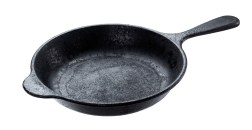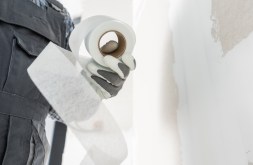The Ultimate Beginner’s Guide to Successfully Retiling Your Bathroom Floor

Are you tired of looking at the old and worn-out tiles on your bathroom floor? Perhaps it’s time for a change. Retiling your bathroom floor can give your entire space a fresh and updated look. If you’re new to the world of tiling, don’t worry – we’ve got you covered. In this ultimate beginner’s guide, we’ll walk you through everything you need to know to successfully retiling your bathroom floor.
Planning and Preparation
Before diving into any home improvement project, it’s crucial to plan and prepare properly. This section will guide you through the essential steps to ensure a smooth and successful bathroom floor retiling project.
Firstly, start by measuring the area of your bathroom floor that needs retiling. Accurate measurements will help you determine how much tile and other materials you’ll need for the job. Don’t forget to account for any cuts or angles in your calculations.
Next, decide on the type of tile you want for your bathroom floor. There are various options available, including ceramic, porcelain, natural stone, and vinyl tiles. Consider factors such as durability, maintenance requirements, aesthetics, and budget when making your choice.
Once you have chosen your tile type, it’s time to purchase all the necessary materials. In addition to tiles, you’ll need adhesive mortar or thinset, grout, spacers, a trowel or notched trowel for applying mortar or thinset evenly, a tile cutter or wet saw for making precise cuts, a grout float for applying grout smoothly, and sponges or towels for cleaning excess grout.
Removing Old Tiles
Now that you have everything ready for the project let’s move on to removing the old tiles from your bathroom floor. This step is crucial as proper preparation ensures that the new tiles adhere well and create a sturdy floor.
Start by removing any fixtures or furniture from the bathroom floor. This includes toilets, sinks, cabinets, or any other items that may obstruct your work area. Disconnect the water supply to the toilet before removing it.
To remove the old tiles, you’ll need a few tools such as a chisel, hammer, and scraper. Carefully chip away at the tiles and grout using the chisel and hammer. Be cautious not to damage the underlying subfloor during this process.
Once all the tiles are removed, clean the surface thoroughly to get rid of any debris or remaining adhesive. Use a vacuum cleaner or broom followed by a damp cloth to ensure a clean and smooth surface for tiling.
Installing New Tiles
Now that you have prepared the space for new tiles let’s move on to installing them. This section will guide you through each step of tile installation to ensure a professional-looking finish.
Start by applying adhesive mortar or thinset onto the clean and dry subfloor using a trowel or notched trowel. Spread an even layer of mortar, keeping in mind that only small sections should be covered at one time to prevent it from drying too quickly.
Place your first tile onto the mortar bed and press it firmly into place with slight twisting motion. Insert spacers between each tile to maintain consistent grout lines. Repeat this process until all tiles are laid out according to your desired pattern.
Once all tiles are in place, allow them to set for at least 24 hours before applying grout. Mix grout according to manufacturer instructions and use a grout float to apply it evenly between each tile. Remove excess grout with a damp sponge or towel before it dries completely.
Finishing Touches
Congratulations. You’ve successfully installed new tiles on your bathroom floor. However, there are still some finishing touches that will elevate your project to the next level.
After the grout has dried for 24-48 hours, apply a grout sealer to protect it from stains and moisture. This step will ensure that your bathroom floor remains in great condition for years to come.
Lastly, reinstall any fixtures or furniture that you removed earlier. Take your time to clean the tiles thoroughly and enjoy your newly retiled bathroom floor.
In conclusion, retiling your bathroom floor can be a rewarding DIY project for beginners. By following this ultimate beginner’s guide, you’ll have all the knowledge and confidence you need to successfully transform your bathroom space. Remember to plan and prepare properly, remove old tiles carefully, install new tiles with precision, and add those finishing touches for a polished look.
This text was generated using a large language model, and select text has been reviewed and moderated for purposes such as readability.





